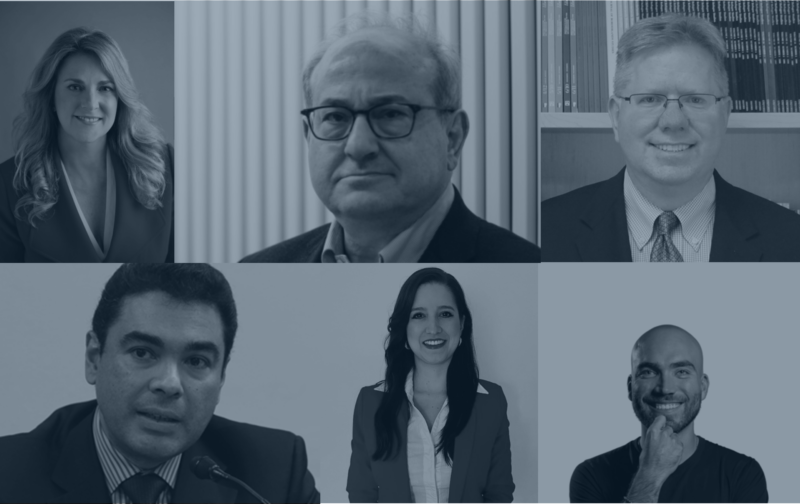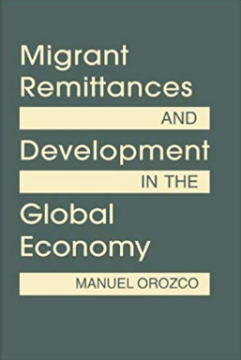The Earthquake’s Impact on Remittances
The earthquake in Haiti has exacerbated an existing distress during the international recession and increased uncertainty of what to do and how to help.
On March 30, 2022, the Inter-American Dialogue hosted a public roundtable centered on the recent increases in the flow of remittances toward Latin America. The aim of the event was to understand the macroeconomic impact remittances have, the trends in the main sending methods, and whether this increased inflow can be attributed to the higher migration levels in the region.
The guests participating in the discussion were Andrew Selee, president of the Migration Policy Institute, Maria Alejandra García Madrigal, director of strategy of Diaspora Outreach for Bancolombia, Lillian Argilagos, executive vice president of Viamericas, and Piero Coen, CEO of Osmo. The welcoming remarks were given by Michael Shifter, president of the Inter-American Dialogue and the conversation was moderated by Manuel Orozco, director of the Migration, Remittances, and Development Program.
Shifter introduced the discussion by recalling the relevance of remittances for Latin America and the Caribbean, a region in which some economies are highly reliant on this inflow of money from migrants. Furthermore, Shifter underlined the increase of remittances in 2021, reaching US$135 billion and marking a 24 percent increase from the previous year, surprising many given the ongoing pandemic. On the same note, Orozco provided further context in which this increase is happening. Increased migration levels toward the United States, a sluggish economic recovery in Latin America and the Caribbean, together with fiscal consolidation needs complicate the current outlook for the region and provide some explanation for remittance trends.
Selee then started his remarks with an analysis of the current status of migration levels towards and from Latin America. He stated that there are two simultaneous dynamics, which are at the root of the recent increase in migration levels. On one hand, there is a structural growth of migration flows from Central America, while on the other hand there is a conjuncture of different crises that overlap at this moment, ranging from political conflict to economic stress, particularly in Nicaragua, Venezuela and Haiti.
The conversation continued with the intervention of Argilagos, who compared and contrasted digital sending methods for remittances with the work of retail agencies. She stated that, while there is a clear growth in the digital sector (highlighted in the new report, "Family Remittances in 2021: Is Double-Digit Growth the New Normal?" from the Migration, Remittances, and Development program at the Dialogue), the retail agencies are not bound to disappear in the near future. A healthy competition of both methods is key in driving progress in the field, since both digital and retail have unique advantages to customers that cannot be substituted, such as the face-to-face assistance of retail agencies and the 24/7 availability of digital methods.
García Madrigal of Bancolombia picked up the discussion and focused specifically on the role of bank deposits and on Colombia’s outlook. She underlined the importance of bank deposits for increasing the likelihood of saving money that is received in the form of remittances. Then, García Madrigal highlighted the recent positive trend in bank deposits in Colombia, which grew even during the pandemic. Convenience, security, and cost were the three main benefits customers receive through utilizing bank deposits.
To close out opening statements, Coen introduced his perspective from the fintech sector. One of the points he raised was that financial inclusion doesn’t necessarily have to pass through the banking system, since today there are other fintech solutions available for the customers. Coen stated that these innovative opportunities allow individuals to have easier access to financial services, since they are mostly digital and easy to access. To conclude, he also predicted a significant growth of crypto in the coming decades by comparing it to the uptake in internet access.
The panel ended with lively participation from the public in the question and answer section. The discussion started with the potential inflow of illicit money from criminal activities and whether or not this is easily tackled through regulation, before continuing to a more robust conversation on financial inclusion, especially for individuals who are excluded from identification documentation due to politically motivated reasons, and finalizing with a spirited back-and-forth on the future prospects of cryptocurrencies.
The earthquake in Haiti has exacerbated an existing distress during the international recession and increased uncertainty of what to do and how to help.
How do patterns of migration and remittances differ across regions? What kinds of frameworks support the contributions of remittances to local development?
The results of a recent financial education project informed a wide-ranging discussion on financial inclusion strategies in Mexico.
 Panelists for the discussion on increased remittances
Panelists for the discussion on increased remittances

 Video
Video